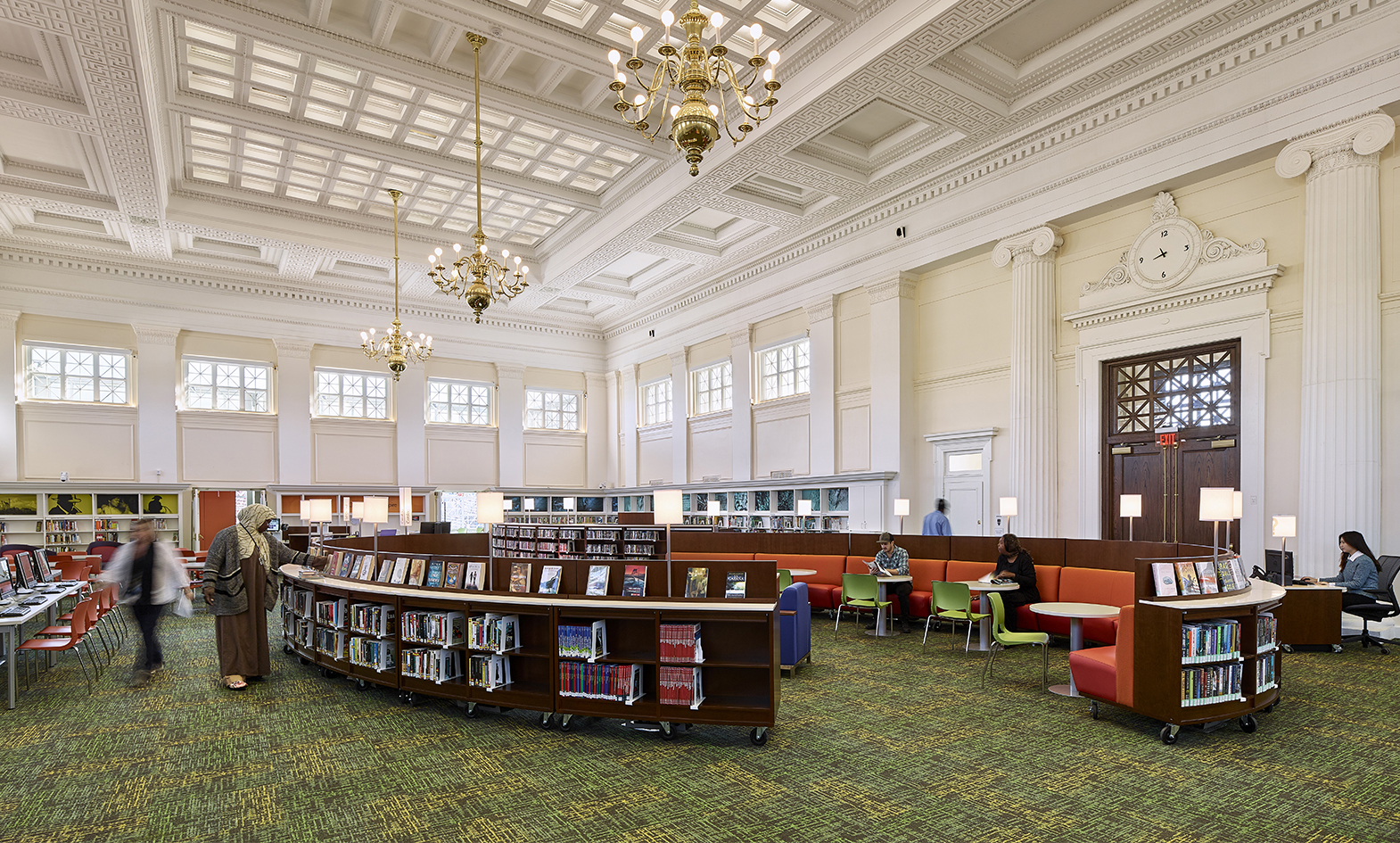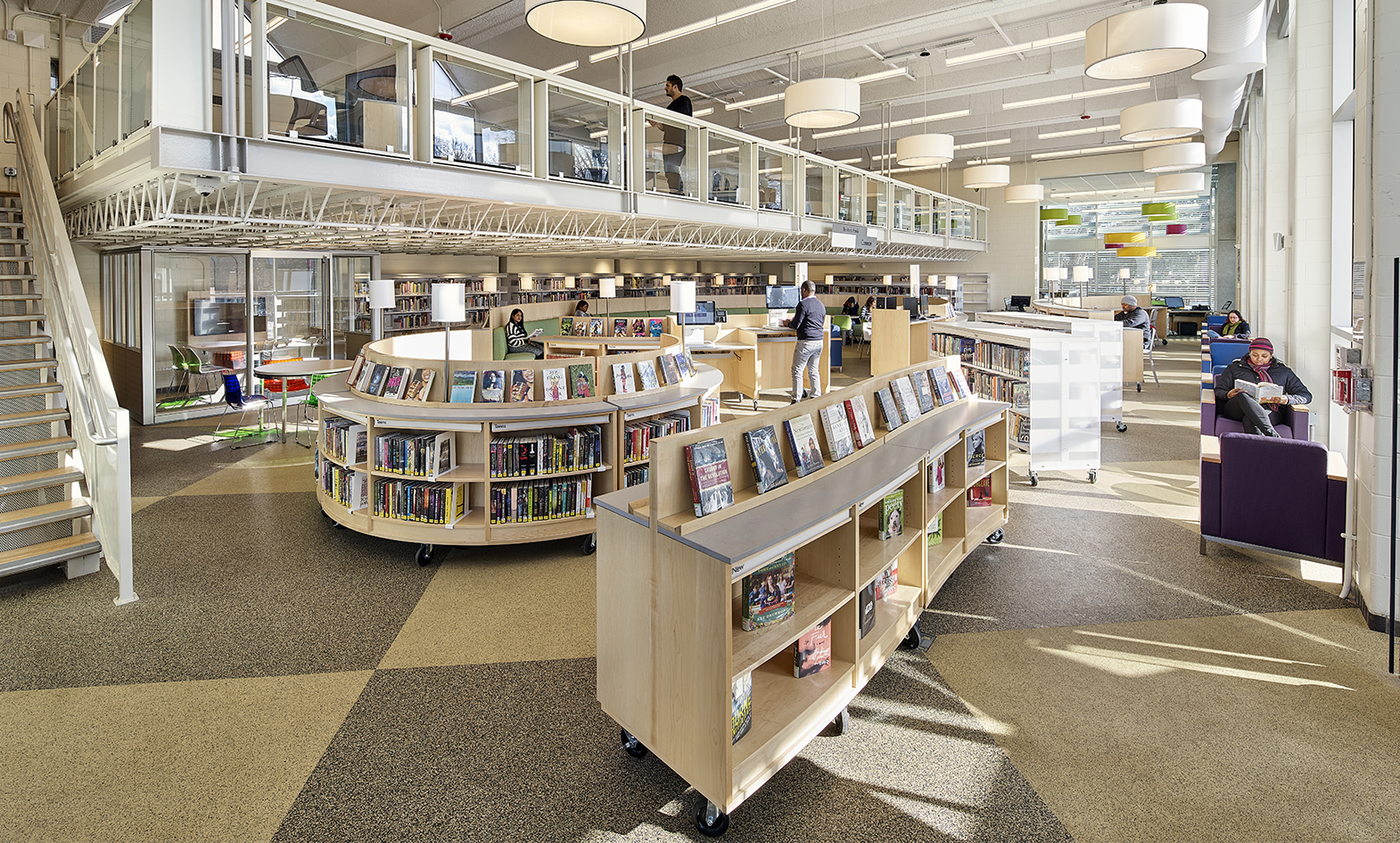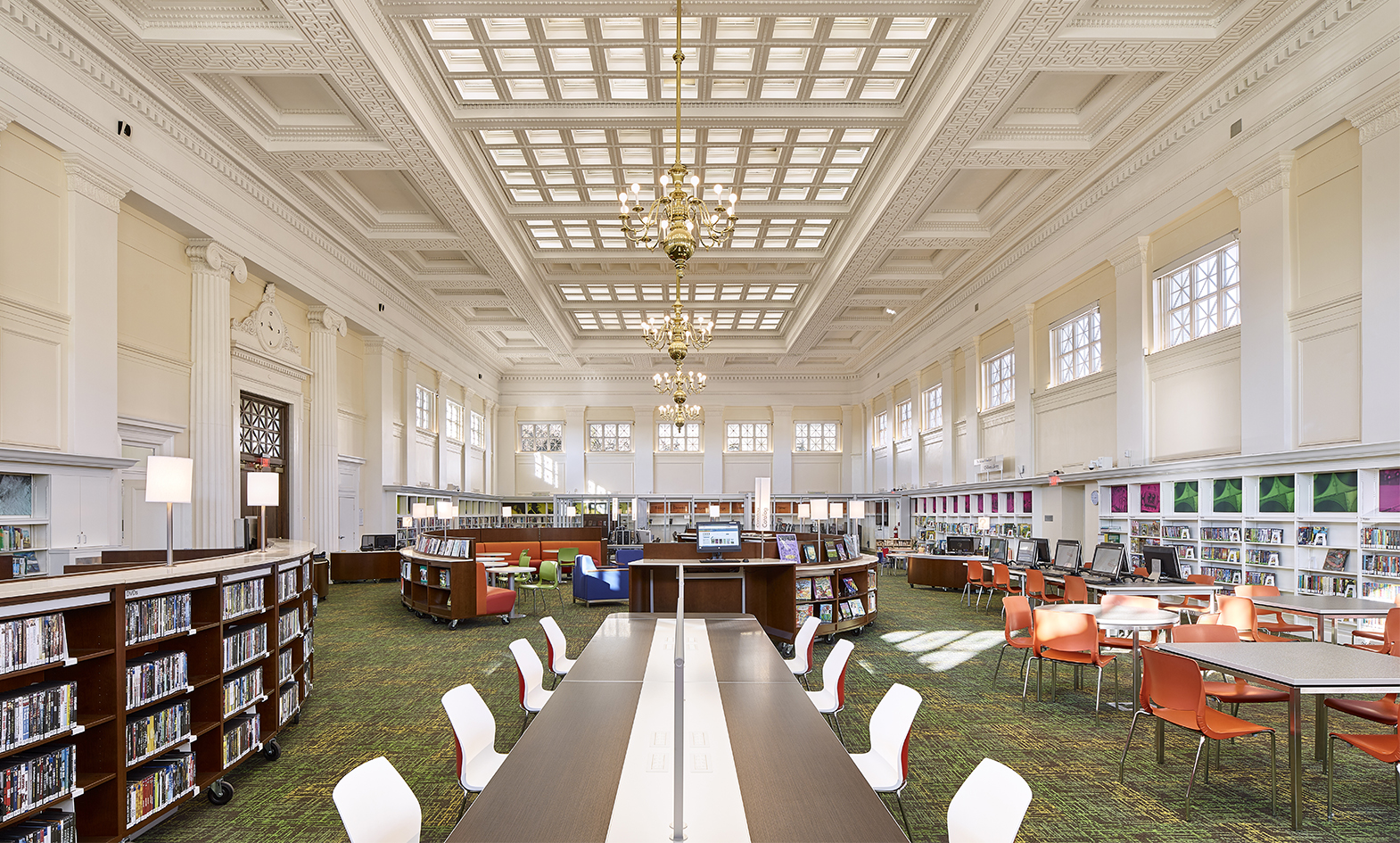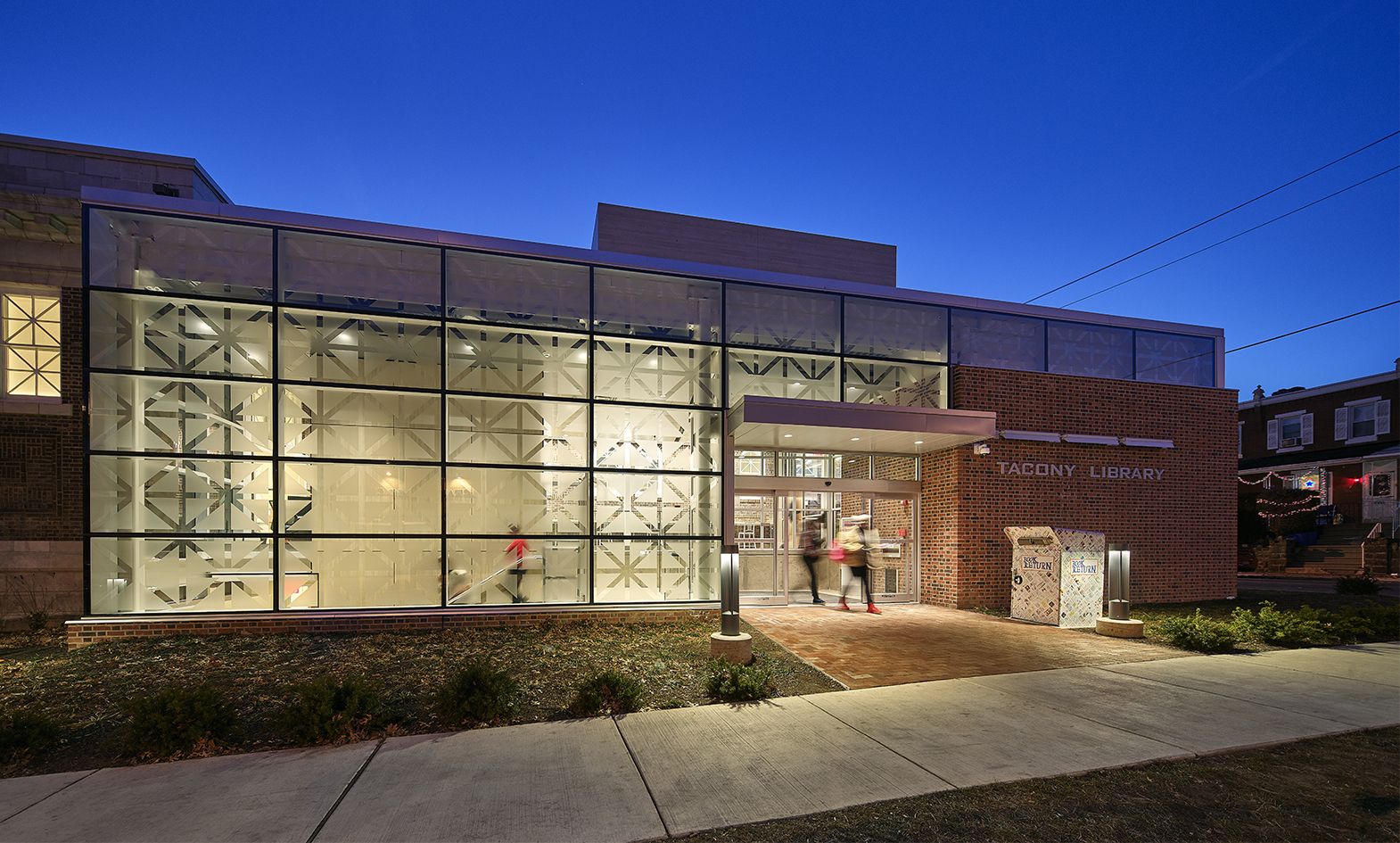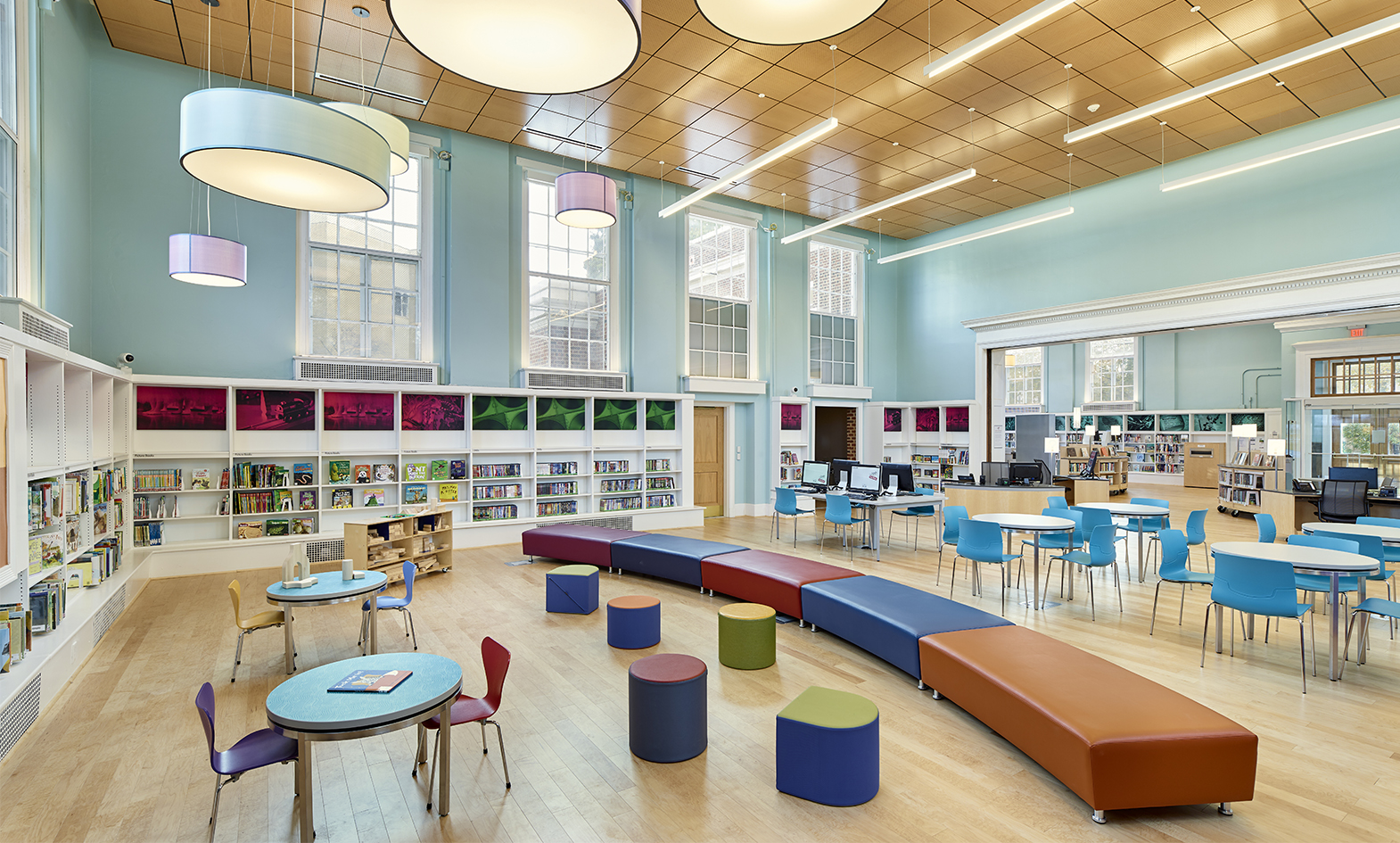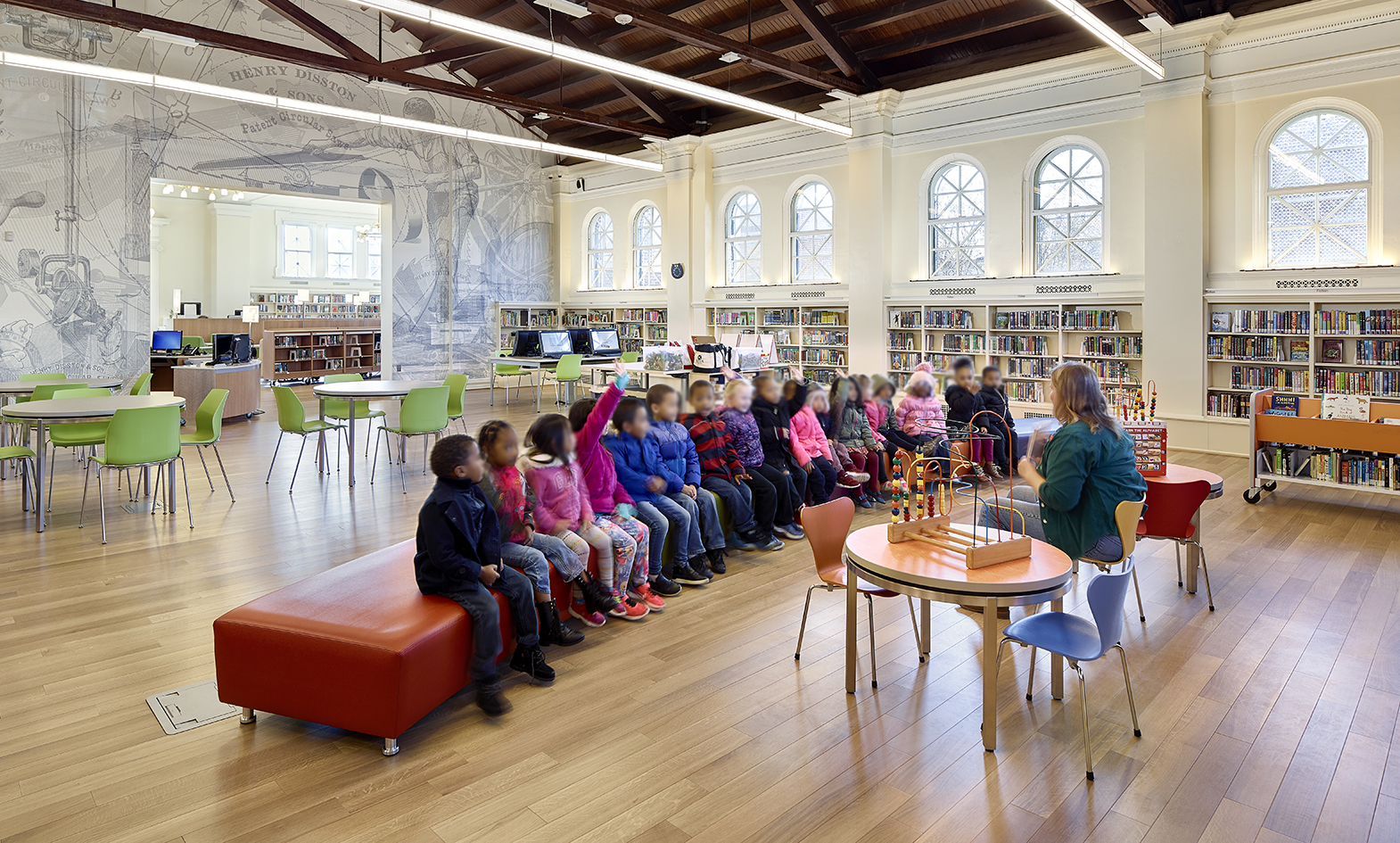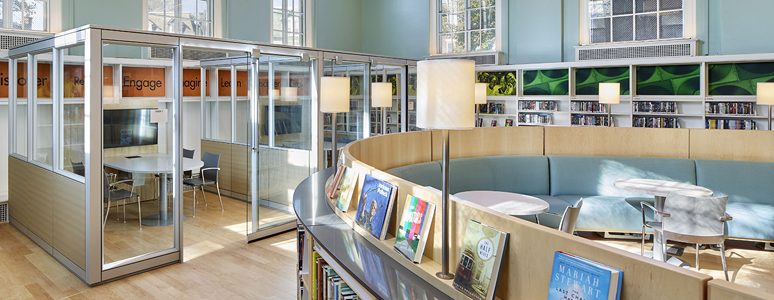
Every now and again, a public library project comes along that, when it ends, feels like we have accomplished something truly spectacular. The Free Library of Philadelphia renovation projects not only bring spaces into the present, but also create public library furniture and interiors that lead the pack into the future.
Agati worked closely with the FLP Library system and Jim Keller, an architect specializing in library design, to create the perfect contemporary public library spaces for patrons across Philadelphia. Our interview discusses how Jim and his team created a space to accommodate all work patterns, learn from patron surveys, and integrate digital preparedness that will save your library time and money in the future.. Read Jim Keller’s compelling insight below:
Public Library Furniture for Every Work Pattern
What are some of the changes that helped make these branch revitalizations so successful?
We took our cues for public library furniture and palette from the community conversations, combined with the neighborhoods and the historic buildings themselves.
The Logan community suggested tranquil, calming colors, the Lillian Marrero community suggested vibrant, lively colors, Lovett evokes its landscape setting, and Tacony reflects its former palette derived from historic photos and research.
As well, the lighting is a significant component of the re-imagined public libraries – all energy efficient LED lighting. Most of the community conversations focused on sustainability. The lighting, new mechanical systems, thermal enhancements for the windows, and new, insulated roofs all contribute to the success of the Libraries.
Public libraries are traditionally portrayed as boring book repositories. Today, they’re being heralded as community centers for all. How do you balance a variety of work patterns within public library design?
The staff can usually help determine the optimal balance of public library furniture type and space. For example, divisible meeting rooms are a great design solution, but variety is always best, including open tutor spaces, like in the “Building Inspiration” projects.
Library program areas can also be designed with movable glass doors/walls that become part of the publicly accessible space when not used for meetings/events. We employed this option for the children’s program space at the Lovett Library – Sightlines and visual management are important in designing public library spaces, particularly library study spaces.
After going through the four projects and looking back, what surprised you the most?
The absolute commitment of the Library to re-create these buildings in a manner that achieves the principles of universal design surprised and impressed me the most. Very tough decisions were made to keep the integrity of the building expansion designs in order to achieve universal design.
“Building Inspiration” creates a welcoming and intuitive access to each public library. This design level exceeds code requirements and ADA requirements. I am thrilled that every person can now enter each of these buildings with dignity and a genuine sense of welcome.
Digital Resources for the Future, within Your Budget
What makes a public library ready for the digital age and what are the key elements that define “the digital age” presence in library spaces?
The key physical aspects of the Public Library that make a building ready are ample electrical service, data connections, and flexible environments that anticipate the constantly evolving nature of the digital age. In addition to automation, self-service, and web-based options, we can imagine a hologram in the future meeting with or presenting to us from another place. Therefore, space allocation and the digital requirements for any newly realized technologies are key.
Libraries and their leaders often have to accomplish a lot with a little. Do you have any low cost suggestions for public libraries to make their space more digital friendly?
Often public libraries have ample electrical service coming into a building to allow for the addition of more outlets. There are several methods of adding outlets, often where there are already electrical lines or circuits with space available. A design professional or licensed electrician can help with simple solutions in this area.
Say a librarian is short on funds – what corners can they cut in designing their space without a designer or architect?
The most successful library intervention that I have seen undertaken without a designer or architect is the de-cluttering of existing public library furniture. Other successful interventions have included augmenting a space with comfortable furniture, adding outlets, adding artwork, and creating a café space with simple furnishings.
Many librarians are multi-skilled and have a talent for space, but if this is not the case, it is advisable to seek guidance from skilled volunteers or a design professional, even if funds are short. For projects of any complexity, a design professional will surely prove beneficial, including maximizing the results with the funds available.
Surveys are a tool not all libraries employ when performing research. Are patron surveys truly helpful in getting feedback, or what other methods of research should librarians use to make the best design decisions?
Surveys can be very helpful in determining community priorities. It is important, however, to balance survey results with other statistics and observations, as a survey or community conversation is only partially representative. Both of the aforementioned are extremely useful research methods. Local statistics and research on regional and national trends can also be informative and lead to transformational processes and physical solutions. We visited many public libraries as part of the early stage “Building Inspiration” design process, and this informed us in many ways.
If you had zero financial constraints, what library would you build? Would it be similar to the library as we know it now, would it be completely different, etc?
I subscribe to the notion that creativity is best guided by constraints. If you are a painter, this may include the medium available. For an architect, this includes construction materials, technology, and funding available.
I would like to design a prototype public library that is a relatively small, merchandised format, digital library staffed only during typical library hours, but open 24/7. That would be an exciting challenge. I would also like to design a version of the Chilean “Biblio Metro” – satellite libraries positioned in select Subway/Elevated concourses around a metropolitan environment. Maybe this is the same prototype.
What new resources will librarians need to consider when designing their space to accommodate their patrons?
Greater connections to the outdoors/gardens and natural light; energy zero buildings (buildings that take no energy from the grid); crisper, cleaner spaces where people want to spend time and build community; probably space for a hologram to arrive, seriously.
What are your thoughts on the next big shift in public libraries?
I think that the Library prototype I described in the last question very well may represent the next big shift in libraries – compact, efficient, where people are, libraries. The first type is already being implemented in Europe, and Chile has successfully integrated “Biblio Metro” since the early 2000’s.
In part two of our interview with Jim Keller, we learn some tips and tricks for seamlessly integrating public library furniture for a variety of work patterns, the importance of surveys, and how digital preparedness will benefit your space in the years to come.

